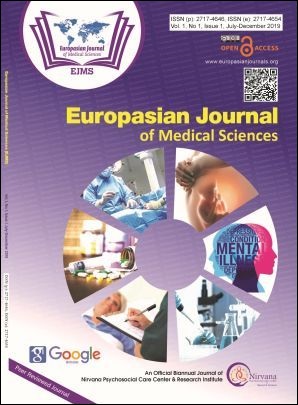Variations in Measurements of the Aortic Knob in the Chest Radiograph in Normal and Hypertensive Subjects
Keywords:
Aortic knob, chest x-ray, Chest radiograph, Measurements, Hypertensive population, VariationAbstract
Background: Aortic knob enlarges in many cardiovascular disorders including hypertension. It can be easily evaluated in chest radiographs. The study was carried out to document and analyze measurements of aortic knob in normal and hypertensive population in chest radiograph.
Methods: This descriptive cross-sectional study was performed in the Department of Radiology and Imaging, Tribhuvan University Teaching Hospital (TUTH) and Manmohan Cardiothoracic Vascular and Transplant Center (MCVTC) from July to October 2019. Postero-anterior (PA) chest radiographs of 200 individuals (100 normal and 100 hypertensives) between the age of 18 to 70 years were evaluated. Width of aortic knob (AKW), straight length of aortic knob (AKS), curved length of aortic knob (AKC) and aortic knob index (AKI) were measured. Aortic knob index (AKI) was determined from AKC divided by AKS.
Results: The mean aortic knob index (AKI) for male and female were 1.24±0.06 and 1.20±0.07 respectively and the total mean aortic knob index (AKI) was 1.22±0.07 in normal population. In hypertensive population, aortic knob index (AKI) was 1.49±0.095 and 1.42±0.04 in male and female respectively. Total aortic knob index (AKI) for hypertensive population was 1.45±0.083. Aortic knob index in hypertensive population was significantly higher than that of normal population. Mean aortic knob index (AKI) in male was significantly higher than that in female in both normal and hypertensive population (p<0.05).
Conclusion: Aortic knob index (AKI), the index for aortic diameter, was higher in hypertensive population and male. Thus, simple measurement of aortic knob in PA chest x-ray may help in predicting cardiovascular disorder.
Downloads
Downloads
Published
How to Cite
Issue
Section
License
The author(s) retain the ownership of the copyrights for their work published in EJMS without any restrictions. Upon submission, the author(s) grants EJMS a license to publish, including to display, store, copy, and reuse the published content.
License to Publish
By submitting a manuscript to EJMS, the author(s) grant the journal a non-exclusive license to:
- Publish and distribute the content in all formats, media, and platforms (both existing and future), while identifying EJMS as the original publisher.
- Reproduce, display, and store the content in both print and online formats, including institutional and digital repositories.
- Translate, adapt, and summarize the work, including reprints, extracts, and abstracts.
- Develop derivative works based on the original content.
- Include the work in electronic databases and provide links to third-party materials.
Creative Commons Licensing
In addition to EJMS’s publishing rights, authors grant third parties the right to use, share, and distribute their work under the Creative Commons Attribution 4.0 (CC BY 4.0) International License. This allows unrestricted use of the content, provided proper attribution is given to the original author(s) and the journal.

